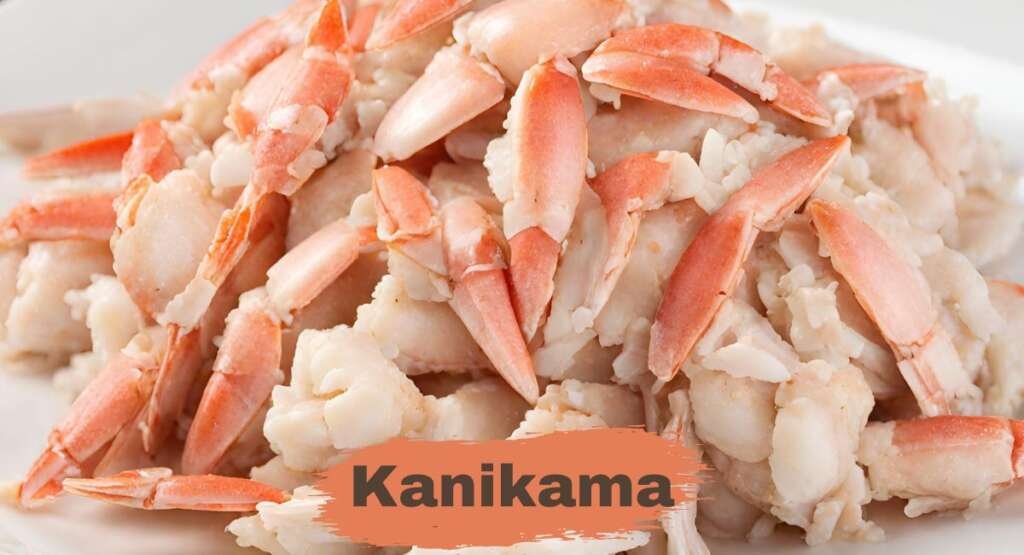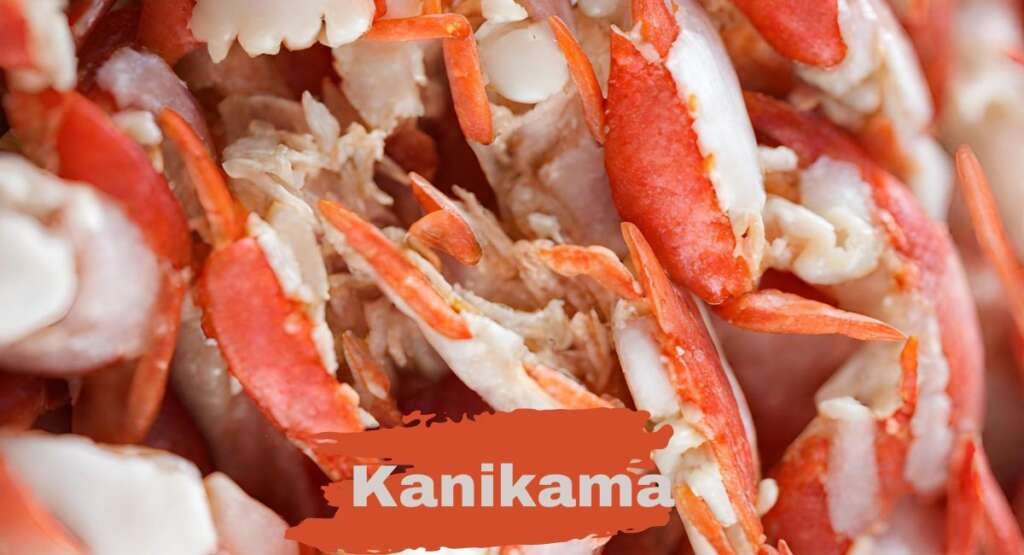

Kanikama is a fake crab meat product. It’s made to taste and look like real crab. But it doesn’t have any crab meat in it. It is used in many dishes worldwide and is very common in sushi rolls and other seafood meals. This article tells you about where it comes from. It explains how kanikama is made. It also looks at ways to use it. The good things and bad things about are discussed too.
Origins and History of Kanikama
It Came from Japan in the 1970s. Scientists made it to be a cheaper choice than real crab meat. The name “kanikama” joins the words “kani” (crab) and “kamaboko” (fish cake). It became popular in Japan because it was easy to use and cost less than crab, but still tasted alike.
After its success in Japan, kanikama spread to other countries in the 1980s. People started using it in sushi rolls, seafood salads, and more dishes. Since it cost less and was simple to cook with, stores everywhere began selling it. Its price and handiness made it a standard item for people to buy.
Manufacturing Process of Kanikama
Making fake crab meat, called kanikama, is a big job. It involves turning raw fish into something that looks, tastes, and feels like real crab meat. The main ingredient is surimi, a fish paste made from finely processed fish. Here’s how it is made step-by-step, from picking the fish to packaging the final product.
Choosing and Getting Ready the Fish
First, the right fish must be chosen. The fish used to make surimi are usually Alaska pollock, cod, and haddock. These fish have white meat, a mild taste, and are easy to find. Big fishing companies catch these fish and send them to the surimi factories.
When the fish reach the processing place, workers clean them, well means taking off scales, insides, and bones. Only the fish meat is kept. Then, the fish gets chopped into tiny bits makes a paste for surimi.
Washing and Cleaning Surimi
The fish paste gets washed a lot to removes bad stuff like extra fat, blood, and proteins that taste bad. Washing is essential to make surimi pure and good. During this step, the paste gets rinsed with water over and over while being mixed around helps get it clean.
After washing, the surimi goes through a process called “dewatering.” In this process, extra water is removed from the paste helps the surimi have a consistent texture. Dewatering also concentrates the proteins, making the surimi more elastic and firm.
Adding Binding Agents and Flavors
With the refined surimi ready, the next step is adding binding agents and flavours. These give it its special texture and taste. Common binding agents are starches (like potato or corn starch), egg whites, and vegetable proteins. These ingredients help make a firm, solid texture like real crab meat.
After cleaning the surimi, extra water is taken out. This process is called “dewatering.” It removes moisture from the paste, making the texture even. The dewatering process also packs the proteins closer, making the surimi stretchy and firm.
Adding Binding Items and Flavors
With the cleaned surimi ready, binders and flavours are added next. These gives its special texture and taste. Standard binders are starches (like potato or corn starch), egg whites, and veggie proteins. These things help make a firm, stuck-together texture. It mimics real crab meat.
Kanikama gets its bright red-orange colour from food colouring. Red dyes like carmine or paprika extract are used to make the outside look like real crab leg meat. But the inside stays white, like crab meat too.
Cooking and Packaging
After shaping and colouring, kanikama is cooked. It is steamed or boiled. Cooking sets the texture firm. It also makes it safe to eat. The cooking gives it a crab-like flavour, too.
After cooking, the kanikama is cooled down. It is then cut into pieces of desired sizes for packaging. Next, it is sealed in airtight containers, or vacuum-packed helps keep it fresh and gives it a longer shelf life. Some companies also add preservatives to the kanikama helps. It stays good during storage and transportation.
Quality Control and Distribution
Checking quality is an essential part of making kanikama. Companies do many tests to ensure the final product is safe and quality. They check for germs, texture, taste, and how it looks. This helps ensure that it meets all required standards.
Many steps go into making fake crab meat. First, fish meat is mixed with other things like egg white. This mix gets shaped into strips. Those strips are cooked, cooled, coloured, and flavoured. They are checked to ensure they meet quality standards. After that, the fake crab meat is packaged. It then gets sent to stores, restaurants, and other places that sell food. At the grocery store, you might find it pre-packaged. It is often used in foods like sushi rolls, seafood salads, and ready-to-eat meals.
In short, making fake crab meat involves many careful steps. Fish gets turned into an affordable, convenient product. This imitation crab meat has become popular in many types of cuisine.
Uses of Kanikama


Kanikama is a food item used in many dishes. Here are some common ways people use it:
- Sushi rolls, like California rolls, often have it inside. Its mild taste and soft texture make it a popular ingredient for sushi.
- It’s frequently added to seafood salads. It gives a crab-like flavour without the high cost of real crab meat.
- Dips, spreads, and appetizers sometimes contain. It adds a seafood taste without being too expensive.
- Some hot dishes use it instead of real crab meat. Crab cakes and crab soups may have it as a cheaper substitute.
Conclusion
Imitation crab meat is a popular food item. It is called kanikama. And it is widely used in many dishes worldwide. It is affordable and accessible to use in recipes. You can find it in sushi rolls, salads, and more. But it has some drawbacks too. It may lack nutrients found in real crab meat. It also contains added ingredients. So, it’s good to know about kanikama before eating it. Learn how it is made and what’s in it. Then you can decide if you want to eat it or not.
stay connected with: fairinstyle
Kanikama FAQs
- What is kanikama made of?
Kanikama is the name for fake crab meat. It is not a real crab. Instead, kanikama is made from a paste of white fish like pollock, cod, or haddock. The fish is ground into very small pieces. Then other things are mixed in, like starch, egg whites, and flavours. These help the paste to taste and feel like real crab meat. After mixing, the paste is shaped to look like crab and coloured to seem real. But it is just an imitation made from fish, not an actual crab.
- Is kanikama a good food choice?
Kanikama can be healthy. It has low fat and calories. It also gives protein. But it may have added starches, sugars, preservatives, and food colours. It does not have nutrients like omega-3 fats and minerals that real crab has. It would help to eat it in moderation as part of a balanced diet. Do not overeat of it.
- How is kanikama used in cooking?
Kanikama is an ingredient used in many dishes. You can find it in sushi rolls like California rolls and other sushi with seafood. You can also use it in seafood salads, appetizers, dips, and spreads. It works well in hot dishes, like crab cakes and soups. It can be a part of fusion cuisine, such as tacos, pizza toppings, and stir-fries. It is an easy and cheaper option instead of real crab meat.